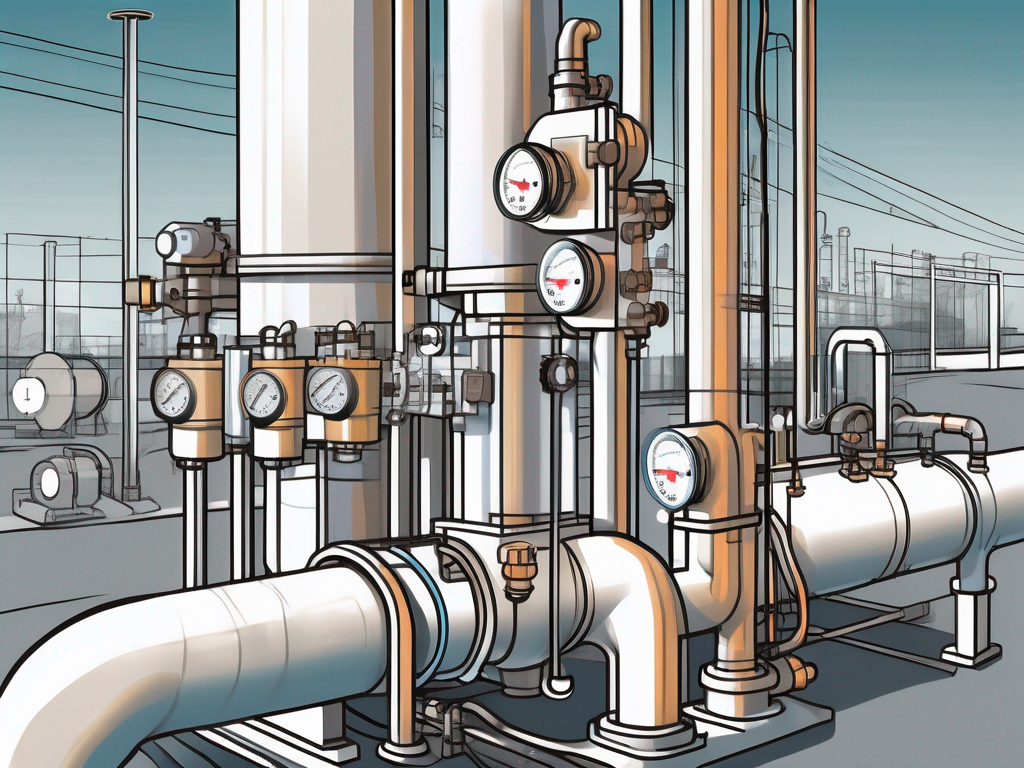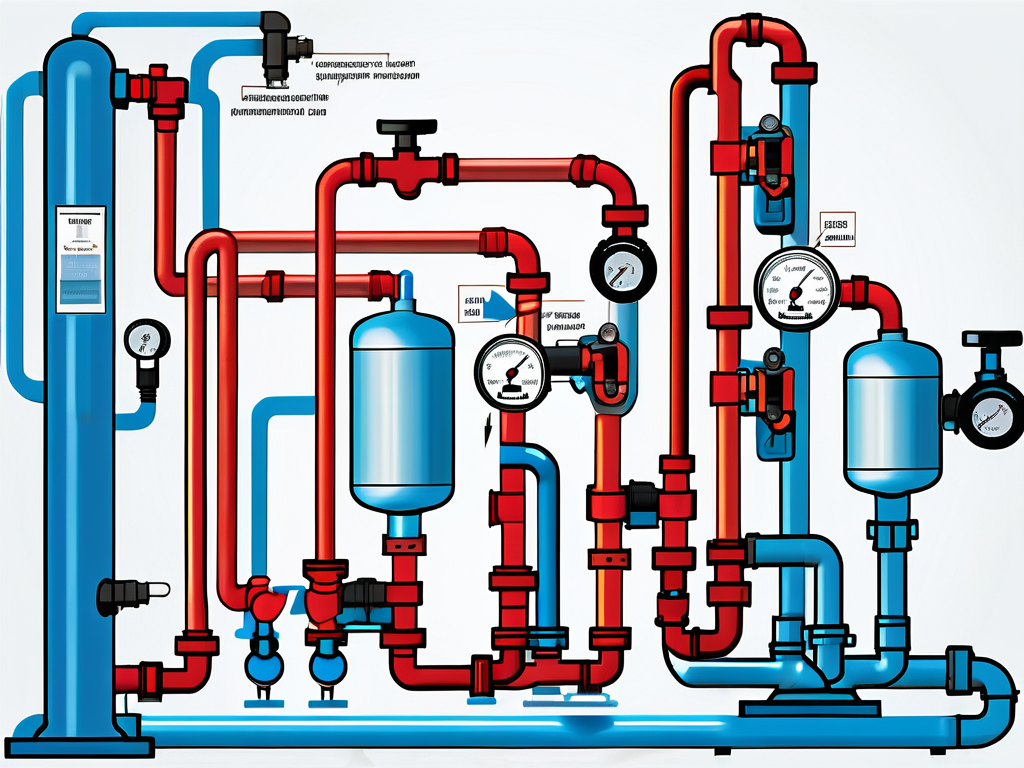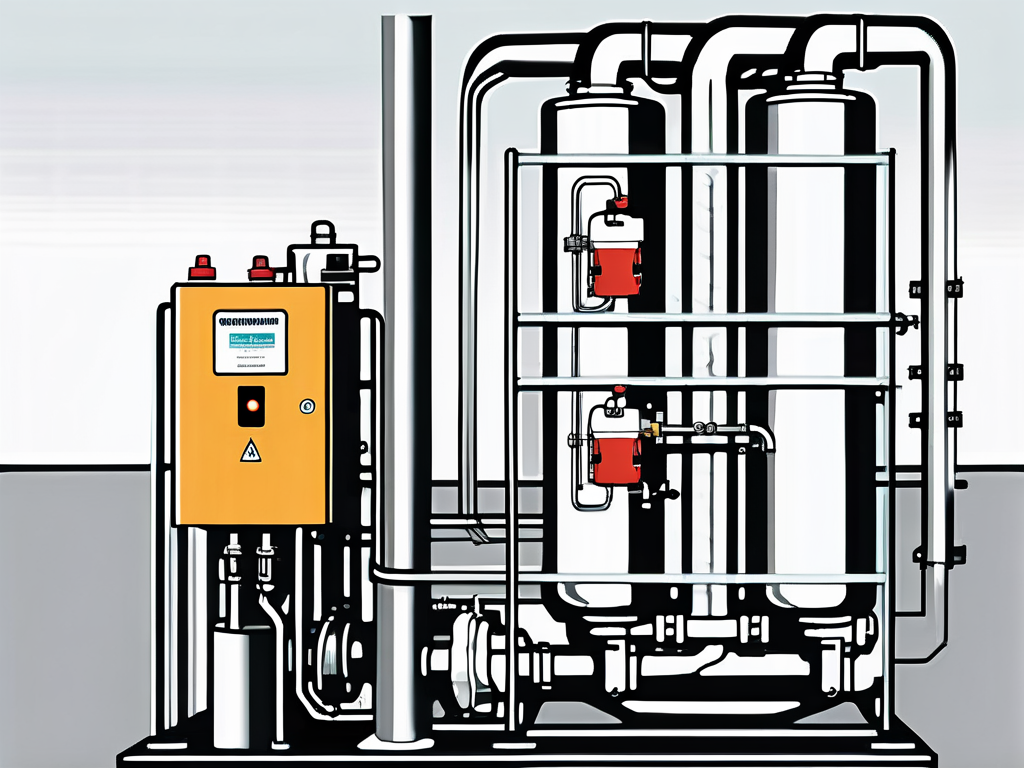
Understanding Booster Pump Systems: A Comprehensive Guide
In the realm of fluid dynamics and water distribution, booster pump systems play a critical role in ensuring effective water pressure and flow rates. As urban infrastructure continues to evolve and grow, understanding the nuances of these systems becomes essential for both consumers and engineers alike. This comprehensive guide aims to unravel the complexities behind booster pump systems, from their basic definitions to advanced operational concepts.
What is a Booster Pump System?
Booster pump systems are engineered to enhance the pressure of liquid in a particular system. They are primarily used in a variety of applications, including residential, commercial, and industrial settings. The fundamental objective is to increase water pressure from the source to the end-user, thus ensuring a reliable supply even in areas where natural pressure may be inadequate. These systems are particularly beneficial in regions with fluctuating water supply, where they can provide a consistent flow and pressure, ensuring that daily activities are not disrupted.
Definition and Basic Function
A booster pump is defined as a type of centrifugal pump designed to raise the pressure of water or other fluids. Its primary function is to elevate the pressure so that the fluid can overcome gravitational forces or flow through long pipe systems effectively. This allows for consistent water flow in high-rise buildings, irrigation systems, and other facilities where water pressure is essential. By maintaining optimal pressure levels, booster pumps also help in reducing wear and tear on plumbing fixtures and appliances, leading to longer lifespans and decreased maintenance costs.
Key Components of a Booster Pump System
A typical booster pump system comprises several key components that work collaboratively to boost water pressure:
- The Pump: The heart of the system, responsible for increasing fluid pressure.
- A Controller: Regulates the operation of the pump, responding to changes in demand.
- Pressure Sensors: Monitor the pressure levels within the system to ensure they remain within desirable limits.
- Piping and Valves: Facilitate the efficient movement of water through the system.
Each component plays a crucial role in the overall functionality and efficiency of the booster pump system, enhancing reliability and performance. Additionally, many modern booster pump systems are equipped with variable frequency drives (VFDs), which allow for more precise control over pump speed and energy consumption. This not only improves the system's efficiency but also contributes to energy savings, making it a more sustainable choice for water management.
Furthermore, the installation of a booster pump system can significantly improve water delivery in multi-story buildings, where the pressure can drop dramatically on higher floors. In such cases, a well-designed booster pump system ensures that every tap, shower, and appliance receives adequate pressure, thereby enhancing the overall user experience. In agricultural settings, these systems are crucial for irrigation, allowing farmers to distribute water evenly across large fields, which is essential for optimal crop growth and yield.
Types of Booster Pump Systems
Booster pump systems come in various configurations, tailored to meet specific demands and operational conditions. Understanding the different types can help in selecting the most appropriate system for your needs.
Single Stage Booster Pumps
Single stage booster pumps are designed to raise the pressure in a single operation. They are commonly used in residential applications where the requirements are modest and specific. These pumps can efficiently handle low flow rates and lower pressure specifications, making them ideal for homes and small facilities. Their straightforward design allows for easy installation and maintenance, which is a significant advantage for homeowners looking to enhance their water supply without extensive modifications. Additionally, single stage pumps are often more cost-effective, making them an attractive option for budget-conscious consumers.
Furthermore, single stage booster pumps are typically quieter than their multi-stage counterparts, which is an essential consideration for residential areas. Many models are equipped with built-in thermal protection and automatic shut-off features, ensuring safe operation and longevity. This reliability makes them a popular choice for applications such as irrigation systems, where consistent water pressure is crucial for maintaining healthy landscapes and gardens.
Multi-Stage Booster Pumps
In contrast, multi-stage booster pumps incorporate multiple impellers to achieve higher pressure levels. These systems are suitable for larger applications, such as high-rise buildings, where significant pressure increases are necessary. Multi-stage pumps are capable of delivering higher flow rates and greater reliability, especially over long distances. Their design allows for a more efficient transfer of energy, which translates into lower operational costs over time. This efficiency is particularly beneficial in commercial settings where water demand can fluctuate dramatically throughout the day.
Moreover, multi-stage booster pumps can be configured in various ways to meet specific requirements, such as variable speed drives that adjust the pump's performance based on real-time demand. This adaptability not only enhances the system's efficiency but also reduces wear and tear on the equipment, extending its lifespan. In addition, these pumps often come with advanced monitoring systems that provide real-time data on performance metrics, allowing for proactive maintenance and minimizing downtime in critical applications like fire suppression systems and industrial processes.
How Booster Pump Systems Work
Understanding how booster pump systems operate is essential for both installation and maintenance. These systems rely on principles of hydraulics and fluid dynamics to achieve their objectives.

The Role of Pressure in Pump Systems
Pressure is a fundamental aspect of any pumping system. In booster pump operations, the maintained pressure helps prevent backflow and ensures that water is directed correctly throughout the piping network. Similarly, the pressure gradient influences flow patterns, enabling efficient water distribution even in complex systems. Additionally, various sensors and control mechanisms are often integrated into these systems to monitor pressure levels, allowing for real-time adjustments and enhancing overall efficiency. This dynamic pressure management is crucial, especially in applications where demand fluctuates, such as in residential buildings during peak usage hours.
The Process of Water Boosting
The process begins with the pump drawing water from the supply source. Once activated, the pump forces water through the system, utilizing the energy generated by the impeller to create an increase in pressure. This boosted pressure then helps water reach its intended destinations, whether they are faucets, irrigation systems, or industrial applications, effectively overcoming natural resistance. Moreover, the design of the pump and the materials used in the system can significantly impact its performance and longevity. For instance, corrosion-resistant materials are often selected for systems that handle aggressive fluids, while energy-efficient motors can reduce operational costs and environmental impact. Understanding these components can help in selecting the right booster pump system for specific needs and ensuring it operates smoothly over time.
Benefits of Using Booster Pump Systems
Investing in a booster pump system can yield significant advantages in both residential and commercial contexts. Understanding these benefits can help make informed decisions about pump installations.
Improved Water Pressure
The most apparent benefit of a booster pump system is enhanced water pressure. For homes with low municipal supply pressure, a booster pump can dramatically improve water flow rates at taps and showers, providing a more satisfying experience for users. This improvement is especially beneficial during peak usage times, such as morning routines or when hosting guests, ensuring that multiple outlets can be used simultaneously without a noticeable drop in pressure. Additionally, enhanced water pressure can facilitate the use of appliances like dishwashers and washing machines, which often require a minimum pressure to operate effectively.
Energy Efficiency and Cost Savings
Modern booster pump systems are often designed with energy efficiency in mind. Variable speed drives allow pumps to operate only as needed, resulting in lower energy consumption and reductions in operational costs. This translates to long-term financial savings for homeowners and business operators alike. Furthermore, many of these systems come equipped with smart technology that can monitor water demand in real-time, adjusting the pump's operation accordingly. This not only maximizes efficiency but also minimizes wear and tear on the equipment, leading to lower maintenance costs and an extended lifespan for the pump. As energy costs continue to rise, investing in a booster pump system can be a proactive measure to manage utility expenses effectively.
Selecting the Right Booster Pump System
Choosing the most suitable booster pump system requires careful consideration of several factors that can influence performance and efficiency.
Factors to Consider
When selecting a booster pump, one should consider:
- The intended application and required pressure levels.
- The flow rate needed, based on the number of fixtures that will be supplied.
- The type of fluid being pumped, as different fluids demand different pump materials and designs.
- Space availability for installation and accessibility for maintenance.
Additionally, it's crucial to evaluate the environmental conditions in which the pump will operate. Factors such as temperature variations, humidity levels, and potential exposure to corrosive substances can significantly impact the longevity and performance of the pump. Selecting a pump that is designed to withstand these conditions can save costs on repairs and replacements in the long run. Moreover, considering the noise level of the pump is important, especially in residential or noise-sensitive environments, as some models are designed with sound-dampening features to minimize disruption.
Understanding Pump Specifications
It is essential to familiarize yourself with key specifications, such as total dynamic head (TDH), flow rate, power consumption, and efficiency ratings. Comprehensive knowledge of these terms aids in selecting a system that meets both current and future needs while maximizing operational efficiency. Understanding the relationship between these specifications can also help in troubleshooting issues that may arise during operation. For instance, if the flow rate is lower than expected, it may indicate a problem with the TDH or possible blockages in the system. Furthermore, efficiency ratings are particularly important for long-term operational costs, as a more efficient pump can lead to significant savings on energy bills over time, making it a wise investment for both commercial and residential applications.
Installation and Maintenance of Booster Pump Systems
Proper installation and regular maintenance are vital for ensuring optimal performance and longevity of booster pump systems. Adhering to best practices can prevent common issues that may arise over time.
Steps for Proper Installation
For effective installation, follow these key steps:
- Choose a location that is easily accessible for maintenance and servicing.
- Ensure electrical and plumbing connections comply with local codes and standards.
- Install the pump at or below the water supply level to maintain prime.
- Test the system for leaks and pressure stability after installation.
Each installation step is crucial for ensuring that the unit operates efficiently and safely. Additionally, it's important to consider the environmental factors that may affect the pump's performance. For instance, installing the pump in an area with excessive heat or moisture can lead to premature wear and tear. Therefore, providing adequate ventilation and protection from the elements can significantly enhance the durability of the system. Furthermore, consulting with a professional installer can provide insights into the specific requirements of your booster pump system, ensuring that it is tailored to meet your unique needs.
Routine Maintenance and Troubleshooting
Regular maintenance includes checking the pressure settings, inspecting for leaks, and ensuring all parts are functioning correctly. Routine checks can help identify potential issues before they escalate, minimizing downtime and repair costs.
Troubleshooting common problems such as unusual noises, pressure fluctuations, or system failures is also part of maintenance. Keeping a detailed log of maintenance activities helps identify recurring issues and facilitates better long-term management of the system. Additionally, it is beneficial to schedule periodic professional inspections, as trained technicians can detect subtle signs of wear that may go unnoticed during routine checks. They can also provide recommendations for upgrades or modifications that could improve efficiency, such as installing variable frequency drives (VFDs) to optimize energy consumption based on demand. By being proactive in maintenance and seeking expert advice when necessary, you can ensure that your booster pump system remains in peak condition for years to come.
Safety Measures and Precautions
Safety should always be a priority when working with booster pump systems. Proper precautions and awareness can prevent accidents and ensure a safe working environment.

Handling and Operating Safely
When operating booster pumps, ensure that:
- All operators are trained in the system's functionality.
- Safety gear is used during maintenance activities.
- Emergency cut-off switches are installed and easily accessible.
These measures significantly enhance the safety of personnel and equipment. Additionally, it is crucial to establish a clear communication protocol among team members. This ensures that everyone is aware of ongoing operations and can respond swiftly in case of an emergency. Regular safety drills can also reinforce these protocols, allowing operators to practice their responses in a controlled environment, which can be invaluable during real-life situations.
Common Safety Risks and How to Avoid Them
Common risks associated with booster pump systems include electrical hazards, potential water leaks, and mechanical failures. To avoid such issues, conduct regular inspections, adhere to safety protocols, and use equipment that meets industry safety standards. Furthermore, it is essential to maintain a clean and organized workspace to minimize trip hazards and ensure that all tools and materials are stored properly. Implementing a routine maintenance schedule not only helps in identifying potential issues before they escalate but also extends the lifespan of the equipment, ultimately contributing to a safer operational environment.
Future Trends in Booster Pump Systems
The field of booster pump systems is evolving rapidly, driven by technological advancements and sustainability initiatives. Staying updated with these trends is crucial for long-term efficiency and effectiveness.
Technological Advancements
Technology continues to revolutionize booster pump systems, with the introduction of smart pumps that enable automated monitoring and remote operation. These advancements lead to better energy efficiency, predictive maintenance capabilities, and enhanced operational control. Additionally, the integration of IoT (Internet of Things) technology allows for real-time data collection, which can be analyzed to optimize performance and identify potential issues before they escalate. This proactive approach not only minimizes downtime but also extends the lifespan of the equipment, ultimately resulting in cost savings for operators.
Sustainability and Environmental Impact
As environmental concerns grow, there is an increasing focus on sustainability within booster pump technology. Innovations aimed at reducing energy consumption and incorporating eco-friendly materials are becoming more prevalent, paving the way for greener operations. Furthermore, manufacturers are exploring alternative energy sources, such as solar power, to drive booster pump systems in remote or off-grid locations, significantly reducing their carbon footprint. This shift not only aligns with global sustainability goals but also meets the demands of environmentally conscious consumers who are looking for solutions that minimize environmental impact.
Moreover, the development of advanced control algorithms allows for more precise adjustments in pump operation, ensuring that energy is used efficiently and only when necessary. This not only enhances the performance of the booster pump systems but also contributes to a more sustainable approach to water management. As regulations around water usage and energy consumption become stricter, the ability to adapt and implement these technologies will be essential for compliance and operational success.
